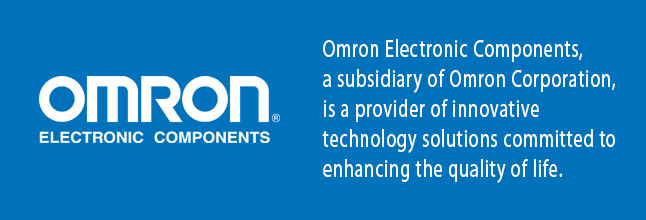- Building a 3D Digital Clock with ArduinoPosted 4 months ago
- Creating a controller for Minecraft with realistic body movements using ArduinoPosted 5 months ago
- Snowflake with ArduinoPosted 5 months ago
- Holographic Christmas TreePosted 6 months ago
- Segstick: Build Your Own Self-Balancing Vehicle in Just 2 Days with ArduinoPosted 6 months ago
- ZSWatch: An Open-Source Smartwatch Project Based on the Zephyr Operating SystemPosted 7 months ago
- What is IoT and which devices to usePosted 7 months ago
- Maker Faire Rome Unveils Thrilling “Padel Smash Future” Pavilion for Sports EnthusiastsPosted 8 months ago
- Make your curtains smartPosted 8 months ago
- Configuring an ESP8266 for Battery PowerPosted 8 months ago
Developments in control electronics enable the intelligent vending machine
Sponsored by

Developments in control electronics enable the intelligent vending machine
Vending machines are a relatively unrecognized, but fast growing, market opportunity for the electronics industry. That growth is being driven by a new class of unit: the intelligent vending machine, which marries the convenience and accessibility of instant, on the spot transaction fulfillment with the tailored, entertaining and connected retail experience that customers now expect. According to a March 2017 report from Grand View Research, this market is expected to reach USD 11.84 billion by 2025. Each and every one of these machines will encompass electronic systems to facilitate the interaction with the user, to control product and cash dispensing and to manage energy use. What solutions are available to create this new breed of intelligent vending machines? In this article we will focus on sensors to identify the customer, presence detection and reliable cash counting mechanisms. We will also discuss remote reset switches.
What is an Intelligent Vending Machine?
Essentially, this new breed of intelligent vending machines offers a purchasing experience that is personal and individual for each user. The machines themselves can be tailored to the application, in terms of colour, size, space and dispensing rate, which is essential as roll-outs can be quite small. They also embrace fully the Internet of Things paradigm, and are fully connected offering cloud based server support, scanning tools, and value-added services based on web-based interaction. Vendors can use the Internet to update content for their interactive platforms and present custom advertising.
What are these new vending machines selling? Whilst the range of goods on offer is huge, food and beverage is one of the largest markets: especially hot drinks. Research and Markets found that the hot drinks segment dominated the industry, accounting for more than 62% of the overall volume due to the surging demand for refreshment drinks. Many of these machines are located in offices, as they facilitate employees grabbing a quick snack in between breaks without the need of placing an order and waiting for it to be processed.
Identifying the customer
The barista in your favorite coffee shop will quite naturally greet a business executive, an elderly lady and a teenager very differently. The more engaged staff will try and tempt the customer with a croissant, a cake or a healthy snack depending on their experience of what this kind of customer or even this individual customer normally buys.
Vending machine manufacturers recognize that this interaction is an essential part of the experience, and can even be monetized. For example, their market research may show that a specific snack appeals strongly to customers aged 20-25 – so a tailored offer to these customers might have an impact. A quite different offer might appeal to the sixty-plus age group. So how can a vending machine emulate something that a human does quite easily and naturally?
Fitting vending machines with a camera is straightforward and inexpensive, but the challenge is interpreting what it sees. Fortunately, consumer electronics is already providing a solution. Phones can recognize their owner’s faces, and vending machines can make use of the same algorithms and technology. Implementing them is a challenge though – vending machines are produced in tiny volumes compared to phones, and have a very different architecture. The success of the design depends critically on the use of good algorithms that deliver a reliable result without using excessive system resources. Even well-designed algorithms will be processor and memory intensive, and adding vision will demand additional system resource.
The award-winning Omron HVC module is aimed at such applications, available in low volumes and readily integrated by any designer without any need to understand the complex algorithms needed to analyze the image or the optical design. HVC builds on the Omron OKAO Vision software, a proven set of image recognition algorithms used in over 500 million digital cameras, mobile phones and surveillance robots around the world. Key features of the module include speed and consistency of response, and the distance over which it can take readings. For example, HVC can capture, detect and recognize a face and provide information like age, gender and mood over a distance of 1.3m in 1.1s and will provide a confidence level with its reading. HVC implements the OKAO software on a hardware platform complete with camera, processor and data interface optimized specifically in terms of its digital and optical design for this application. The module is a fully integrated, plug-in solution. The developer can just look at the outputs and configure the system to make appropriate decisions depending on their status.
Detection mechanisms
Intelligent vending machines offer an ever wider range of goods, and need to adapt quickly to changing retail needs. Drinks vending machines offer a particular challenge, as they need to detect the presence and level of different liquids, some of which may be entirely clear, and the presence or absence of cups, which again could be clear plastic. The fact that these liquids may be hot and pose a safety hazard increases the importance machine manufacturers attach to accurate and reliable detection.
Although conventional photo micro sensors (PMS) are often suitable, it is well known that they struggle with many types of surface. Transparent objects and liquids have always been hard to detect, as have mirrored, diffuse and deep black surfaces. The new Omron B5W Light Convergent Reflective Sensor detects target objects much more reliably than general reflection photo sensors, even those that are often a challenge such as reflective, transparent, diffuse or black surfaces. The sensor’s convergent light beam can be accurately set to trigger on the presence of an object within a tightly specified target area, and ignore any objects in the background or foreground. These sensors are equally suitable for contactless detection of clear or coloured liquids in transparent tanks. The B5W features a combination of a cylindrical and a non-spherical lens.
Cash counting
Despite the increasing popularity of contactless payment, many customers still like to present cash. Inflation means that increasingly, machines need to accept notes and to return them in change. The latest high resolution micro displacement sensors can greatly increase the reliability of these mechanisms, offering contactless measurement of the thickness of paper and multi-feed detection through minute changes in the location of light reflected from the object. For example the new Z4D micro-displacement sensor from Omron is capable of resolving just 10 microns – one tenth the diameter of a human hair or the thickness of a coat of paint. The exceptional resolution is based on an Omron proprietary optical design using the triangulation. This structure achieves very good and stable linearity between the output voltage and distance, simplifying the design of the host circuit.
Standby Power Design
Like other electronic systems, intelligent vending machines are subject to power control directives, like the EU ErP Ecodesign Directive which specifies that the power consumption of equipment in Standby Mode, consumption should not exceed 0.50W, unless the equipment has a status display in which case 1W is permissible. This issue applies particularly to table top vending machines such as coffee machines issued to offices, which are used less intensively and can be left to switch off when not in use, overnight for example.
To support this requirement, Omron has introduced the industry’s smallest remote-reset rocker switch supporting zero-standby power design. This switch can be controlled remotely and is offered in a version with a delayed-off feature to support safe system shut-down. With this switch, the power to the system is maintained when the switch is returned to the off position. The system is then powered down by an external signal after an interval determined by the designer. This prevents issues with data loss or circuit damage through forced power off by the user, and can help safer application design.
Conclusion
Vending machines have been a popular and convenient feature of the retail scene for many years, allowing the impulse purchase of goods instantly at any time. In an increasingly 24/7 world, with staff costs increasing, they are likely to become more and not less popular as time goes on. New electronic technologies are enabling the intelligent vending machine, a development that will enable this well-established concept to remain relevant in the age of Internet of Things and the Cloud.



















